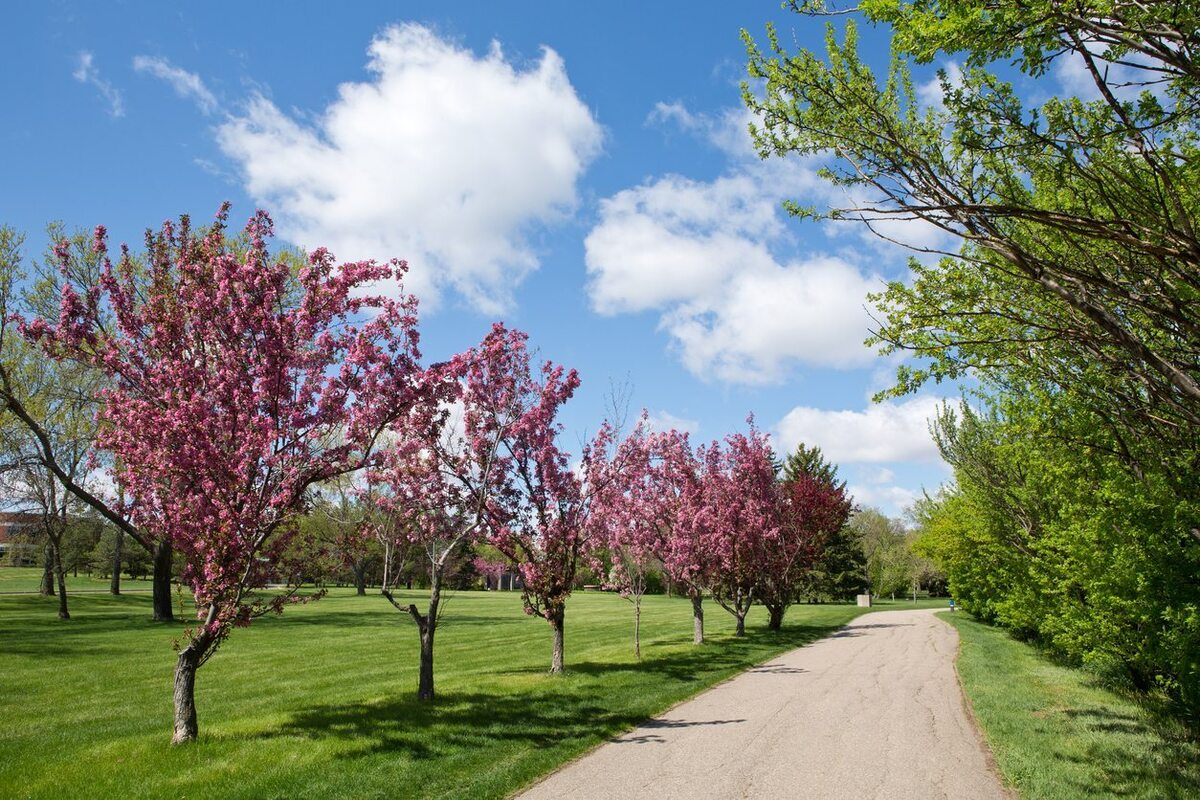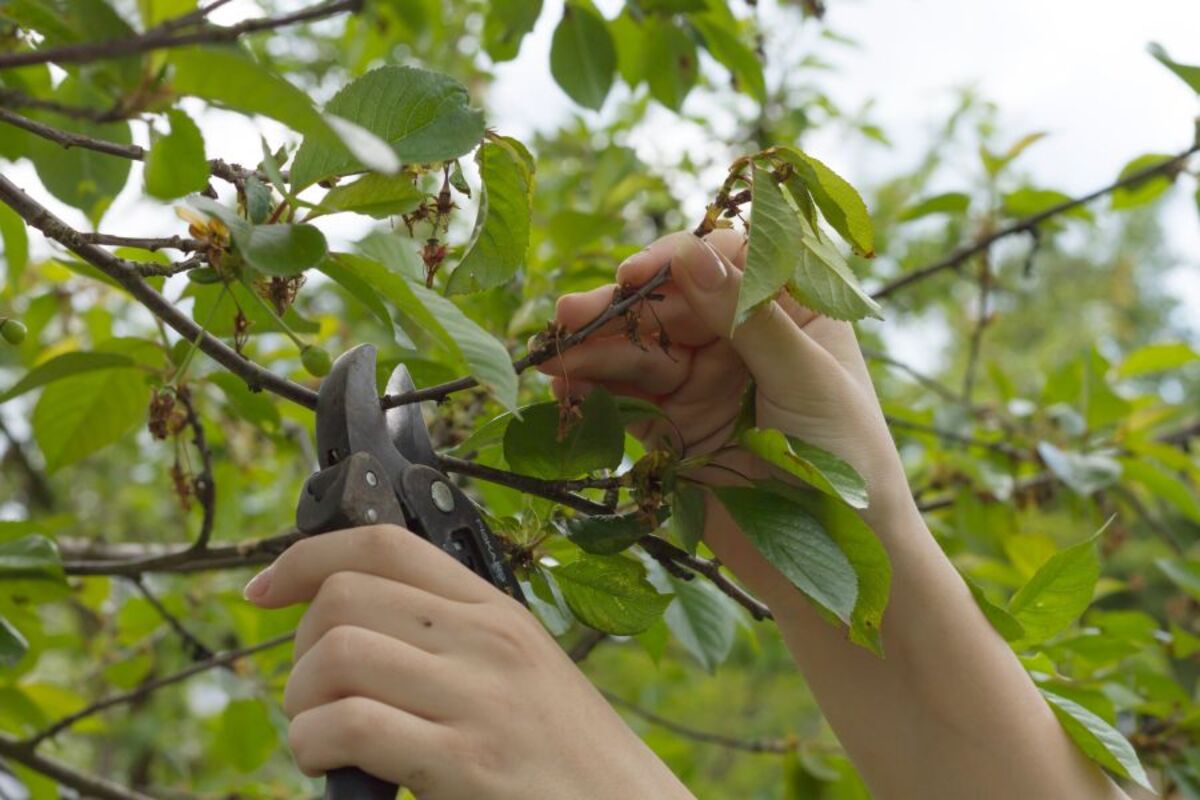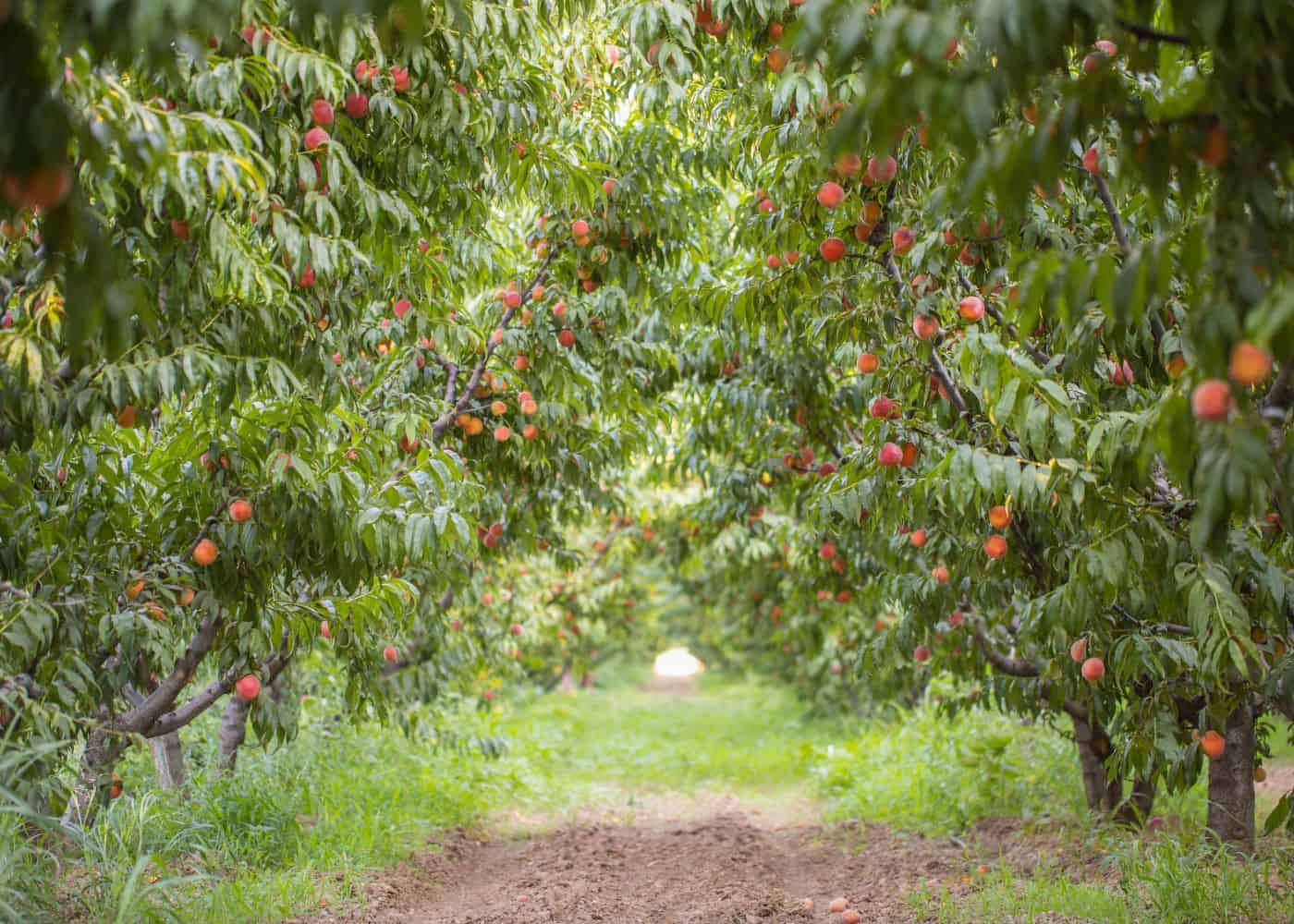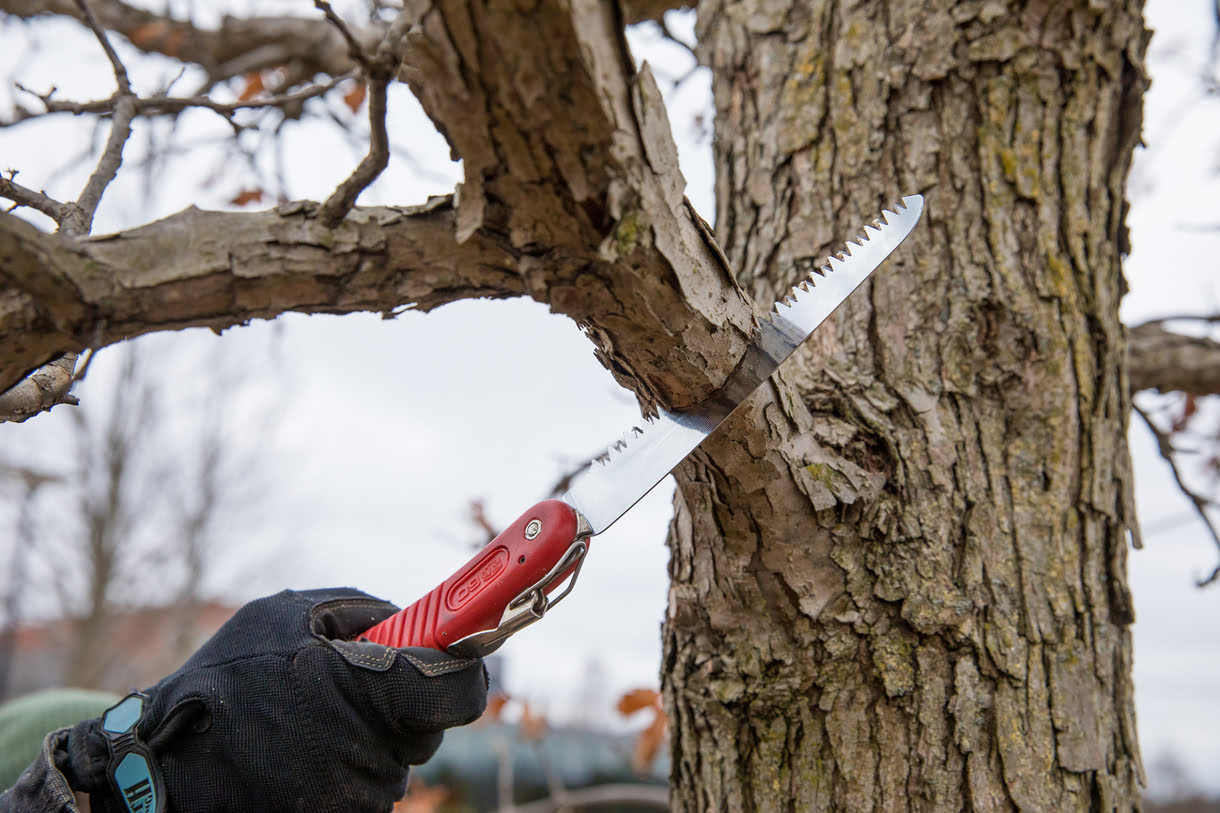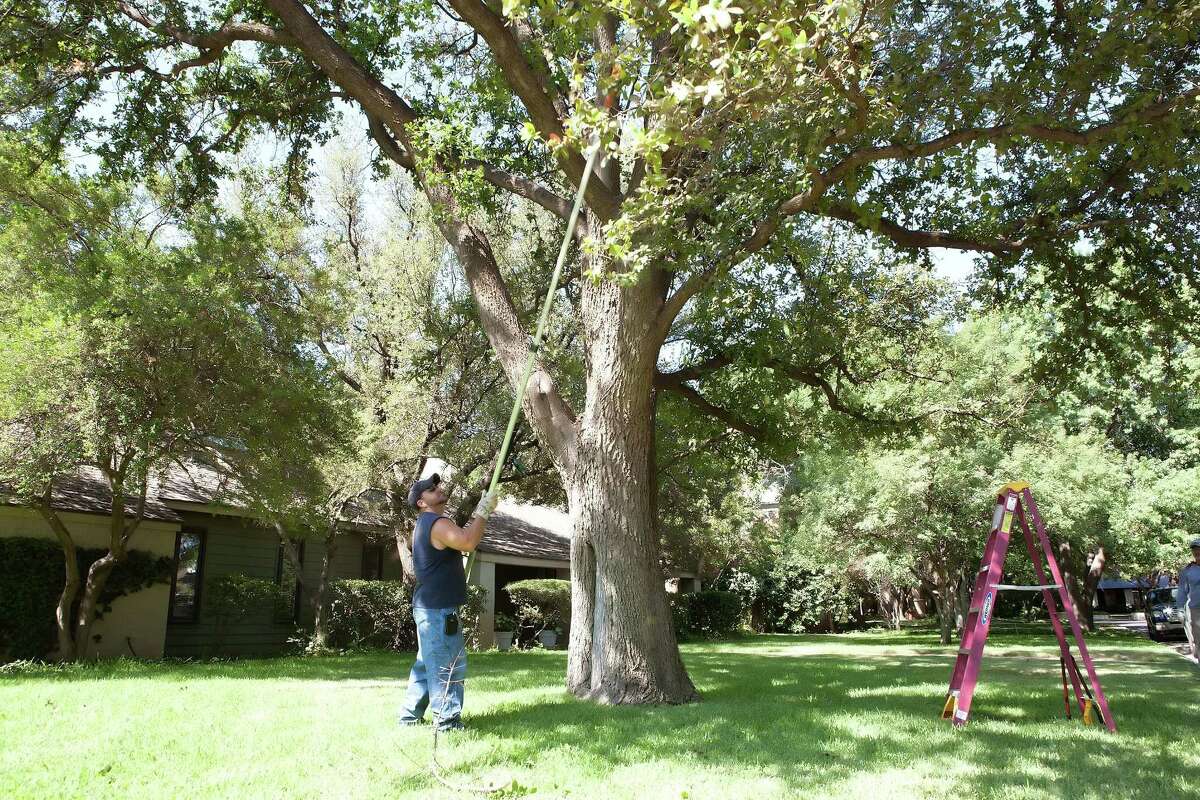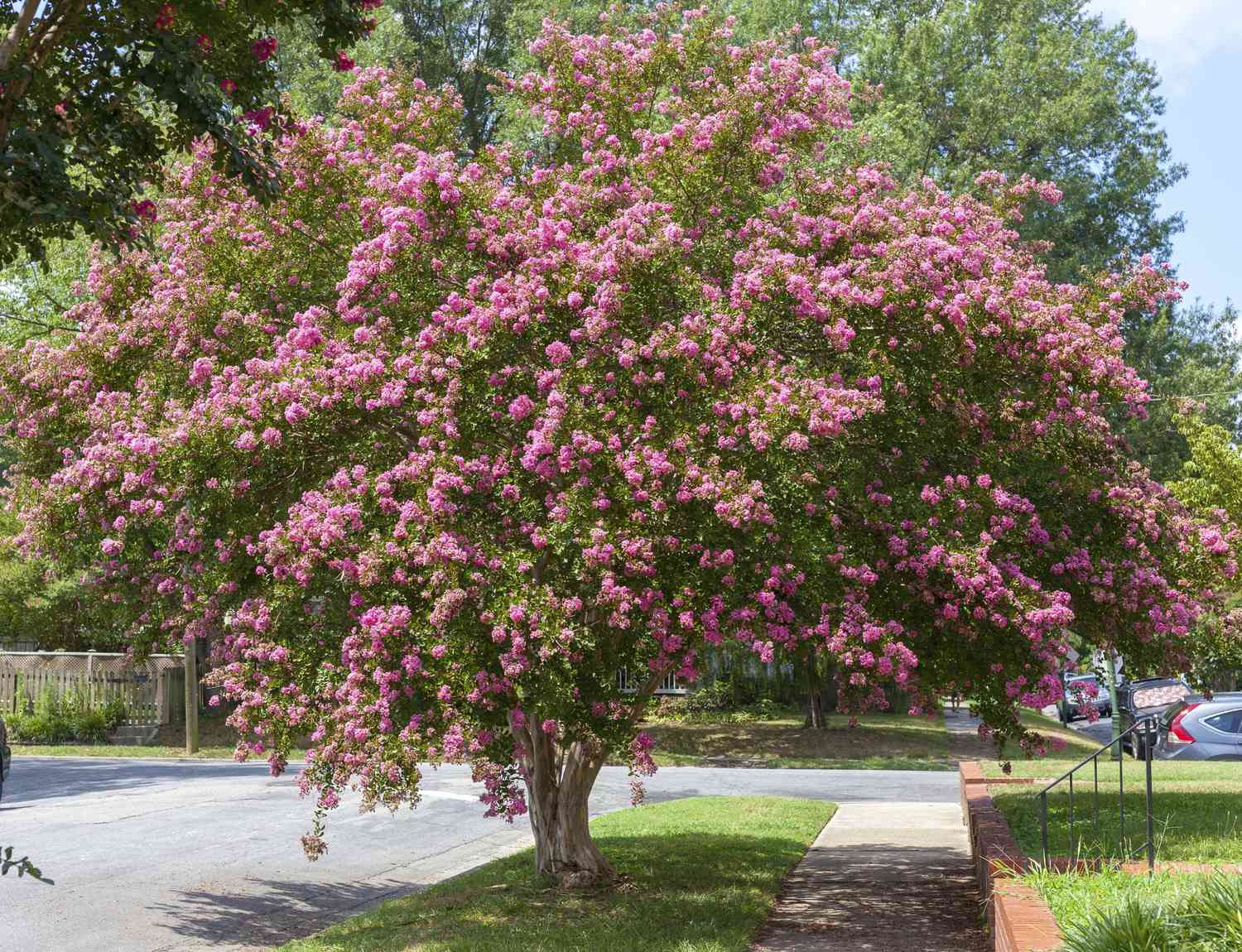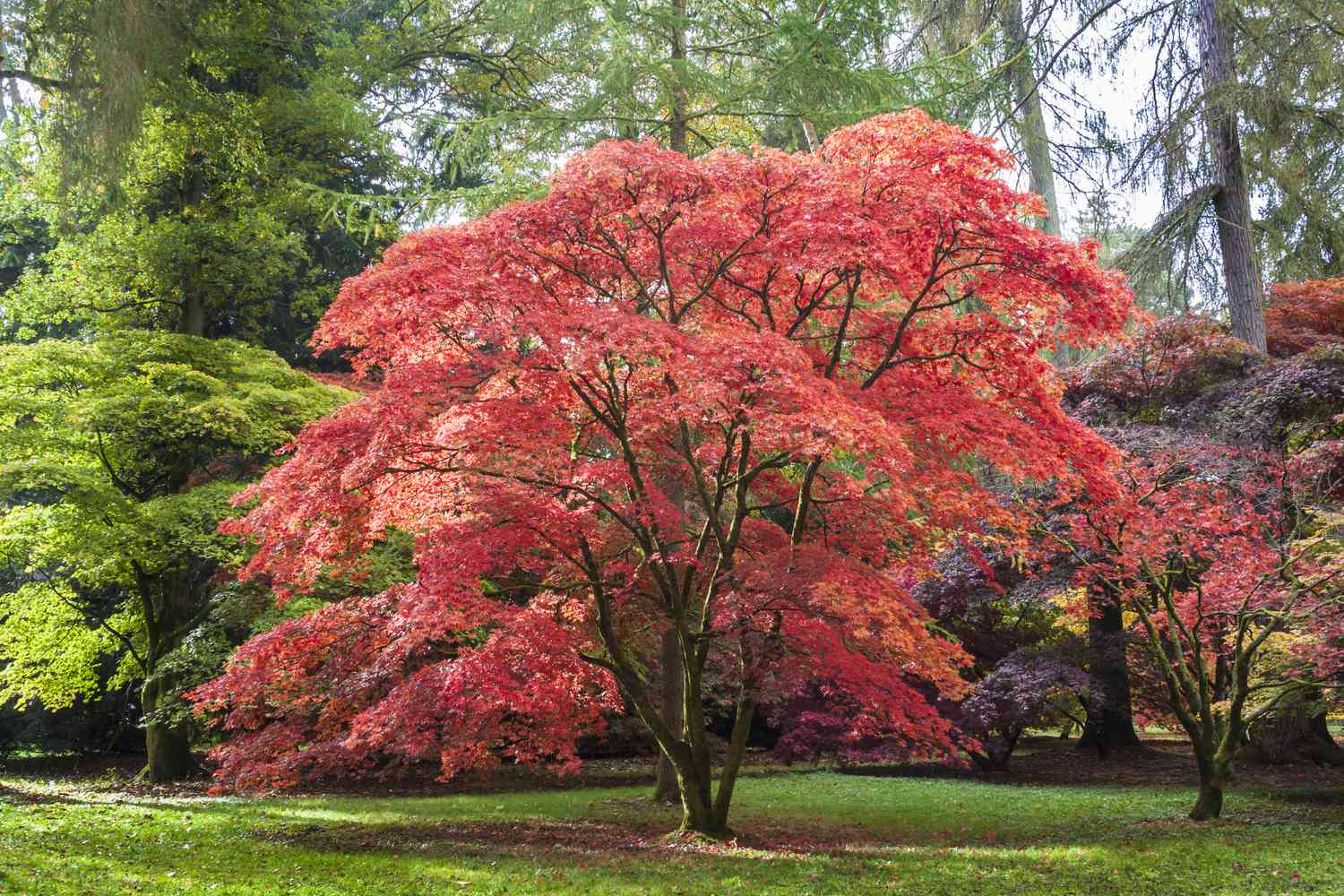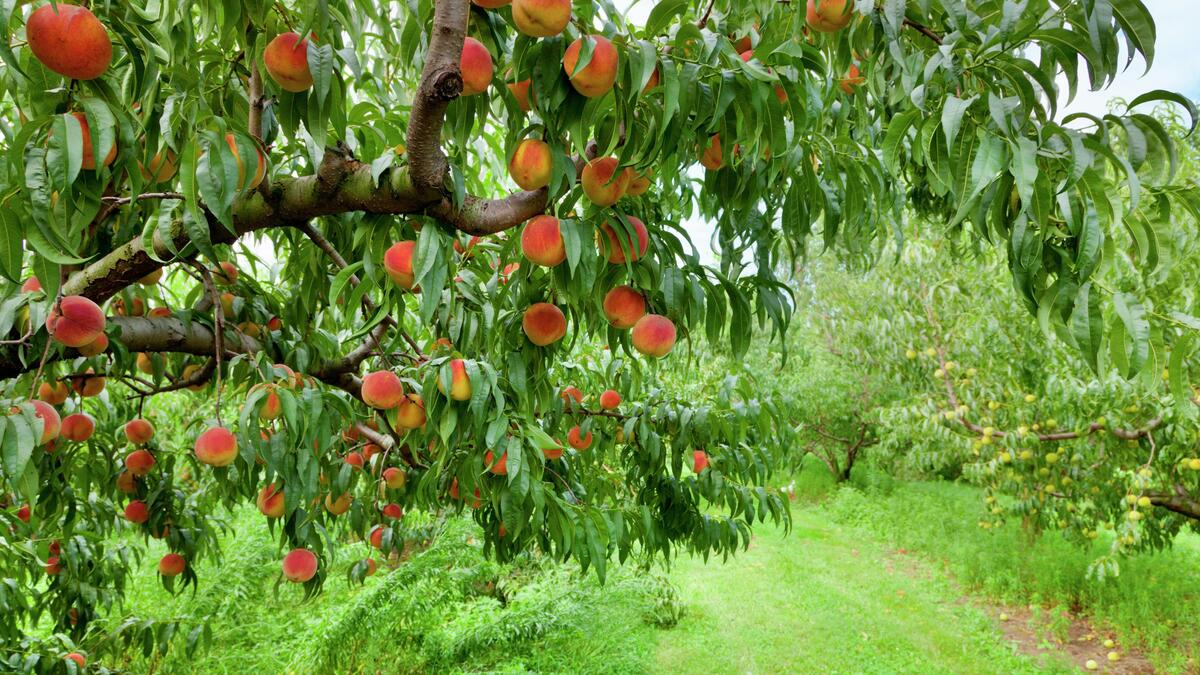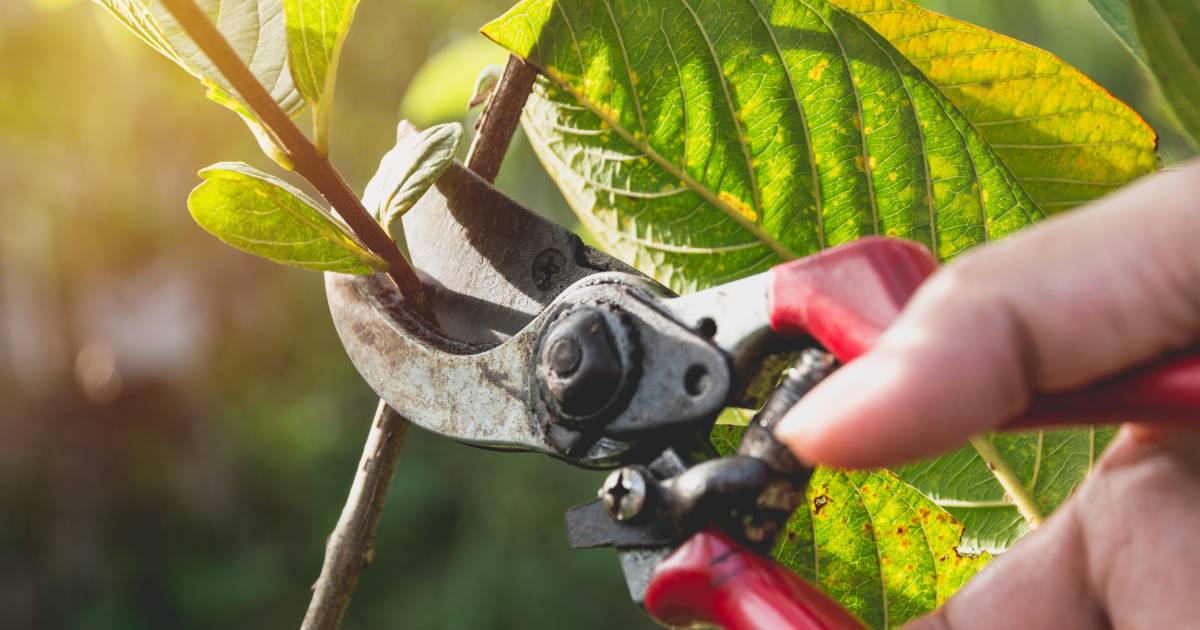Home>Gardening Techniques>Plant Care>How And When To Prune Peach Trees
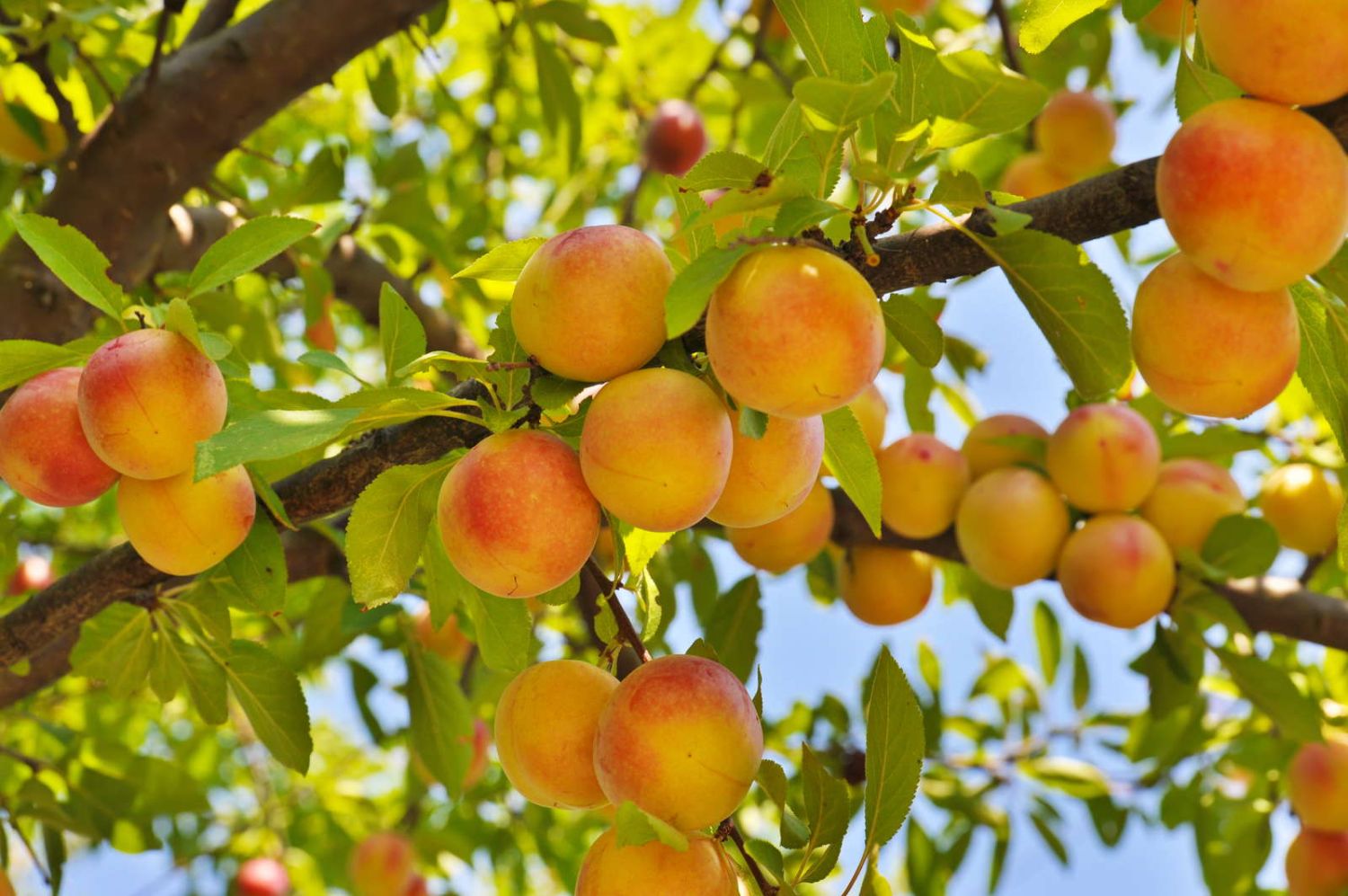

Plant Care
How And When To Prune Peach Trees
Modified: January 22, 2024
Learn the importance of pruning peach trees for optimal plant care. Discover the best techniques and timing for effective pruning to promote healthy growth and abundant fruit production.
(Many of the links in this article redirect to a specific reviewed product. Your purchase of these products through affiliate links helps to generate commission for Chicagolandgardening.com, at no extra cost. Learn more)
Table of Contents
- Introduction
- Benefits of Pruning Peach Trees
- Pruning Tools and Equipment
- Understanding Peach Tree Growth
- When to Prune Peach Trees
- How to Prune Young Peach Trees
- How to Prune Mature Peach Trees
- Pruning Techniques for Improving Fruit Production
- Pruning Techniques for Disease Prevention
- Pruning Techniques for Tree Maintenance
- Conclusion
Introduction
Pruning is an essential practice for maintaining the health, productivity, and appearance of peach trees. By selectively removing branches, pruning helps to shape the tree, promote air circulation, and stimulate growth. Additionally, pruning plays a crucial role in managing pests and diseases, as well as maximizing fruit production.
In this article, we will explore the benefits of pruning peach trees and provide you with valuable insights on when and how to prune effectively. Whether you are a seasoned gardener or a beginner, understanding the principles and techniques of peach tree pruning will empower you to nurture thriving trees that yield bountiful, delicious fruits.
Pruning peach trees not only strengthens overall tree structure but also allows for better sunlight penetration, leading to enhanced fruit quality and increased yield. Additionally, efficient pruning helps in the prevention and control of diseases by removing infected or dead branches that can harbor harmful pathogens.
Equipping yourself with the right tools is crucial for successful peach tree pruning. To efficiently execute pruning tasks, make sure to have a sharp pair of hand pruners for precise cuts, a pruning saw for larger branches, and a ladder or sturdy platform for reaching higher parts of the tree.
Understanding how peach trees grow is essential for effective pruning. Unlike some other fruit trees, peaches bear fruit on previous year’s wood. This means that proper pruning techniques should focus on maintaining a balance between removing old wood to encourage new growth and preserving enough healthy wood for a plentiful harvest.
Timing is crucial when it comes to pruning peach trees. Pruning during the dormant season, typically in late winter or early spring, is recommended to minimize the stress on the tree and prevent the spread of diseases. However, corrective pruning can be done during the growing season to remove damaged or diseased branches.
Now that we have covered the basics, let’s delve into the details of how to prune young and mature peach trees, as well as different techniques for specific goals such as fruit production, disease prevention, and overall tree maintenance.
Benefits of Pruning Peach Trees
Pruning peach trees offers a multitude of benefits for both the tree itself and the fruit it produces. Let’s explore some of the key advantages:
- Promotes better sunlight penetration: Pruning helps open up the canopy of the tree, allowing sunlight to reach all parts of the tree evenly. This promotes photosynthesis and ensures that all branches receive the necessary energy for healthy growth.
- Improves air circulation: Proper pruning creates space between branches, reducing humidity levels and preventing the development of fungal diseases. Good air circulation also prevents the accumulation of moisture, which can lead to rot and other problems.
- Enhances fruit quality: Pruning allows for better-sized and better-colored fruit. By selectively removing branches, the tree can focus its energy on producing fewer, but larger and tastier peaches. Pruned trees also tend to have less fruit drop and improved fruit ripening.
- Stimulates new growth: Pruning stimulates the growth of new shoots, which can lead to better branching and an overall stronger tree structure. By removing older branches, you make room for new ones and promote the growth of fresh, productive wood.
- Facilitates disease and pest management: Pruning helps control the spread of diseases and pests by removing infected or infested branches. It also improves access for applying fungicides or insecticides, making it easier to protect the tree from potential threats.
- Shapes the tree: Pruning allows you to shape the tree and control its overall size and form. By removing excessive branches or restricting growth in certain areas, you can ensure that the tree remains at a manageable height and shape for easier care and maintenance.
Overall, regular pruning promotes the health and longevity of peach trees and ensures their optimal performance. It enhances fruit production, reduces the risk of diseases and pests, and improves the appearance of the tree. To fully reap these benefits, it is crucial to understand the appropriate pruning techniques and timing, which we will explore in the following sections.
Pruning Tools and Equipment
Before diving into the pruning process, it’s essential to have the right tools and equipment. Here are some of the essential items you will need:
- Hand pruners: Hand pruners, also known as secateurs, are the most commonly used tool for pruning peach trees. Look for a sharp pair of bypass pruners, which have a scissor-like cutting action. This type of pruner provides clean cuts and prevents crushing the wood.
- Pruning saw: For thicker branches that are too large for hand pruners, a pruning saw is necessary. Choose a pruning saw with a curved or straight blade, depending on your comfort and the type of cuts you need to make.
- Ladder or platform: To access the higher parts of the peach tree, a stable ladder or platform is essential. Make sure it is sturdy and positioned securely against the tree for your safety.
- Gloves: Protect your hands with gardening gloves, preferably ones that are puncture-resistant and offer good grip. This will prevent injuries from thorns or sharp edges while handling the branches.
- Safety gear: Consider wearing safety glasses to shield your eyes from debris. Additionally, ear protection can be beneficial if you are using power tools such as a chainsaw.
- Disinfectant: To prevent the spread of diseases between cuts, keep a bottle of disinfectant handy. You can use isopropyl alcohol or a bleach solution (1 part bleach to 9 parts water) to clean your pruning tools between cuts.
Investing in high-quality tools will make the pruning process more efficient and ensure clean, precise cuts. Regularly maintain the sharpness of your pruning tools by sharpening or replacing the blades as needed. This will help prevent damage to the tree and reduce the risk of spreading diseases.
Remember, safety should always be a priority when working with pruning tools. Familiarize yourself with proper pruning techniques and take the necessary precautions to protect yourself and your peach tree.
Understanding Peach Tree Growth
Before diving into the process of pruning peach trees, it is crucial to have an understanding of how these trees grow. This knowledge will help guide your pruning decisions and ensure that you are promoting healthy growth and maximizing fruit production.
Peach trees belong to the Prunus genus and are characterized by their rapid growth and relatively short lifespan compared to other fruit trees. Understanding the growth habits of a peach tree will allow you to tailor your pruning techniques accordingly.
Peach trees produce fruit on one-year-old wood. This means that the buds for the upcoming year’s fruit are formed in the previous growing season. It is important to preserve the right balance of old and new wood while pruning to encourage continuous fruit production.
When pruning a peach tree, keep in mind the following growth patterns:
- Vegetative growth: In the first few years, peach trees focus on establishing a strong root system and developing branches. This period is crucial for shaping the tree’s structure and promoting balanced growth.
- Flowering and fruiting: Once the tree reaches maturity, it will start producing flowers in the spring, leading to fruit development. It is essential to maintain enough fruiting wood and encourage new growth to ensure a consistent yield.
- Renewal growth: Over time, the older wood on a peach tree will become less productive and need to be replaced with new growth. Pruning helps to remove old or non-productive branches and stimulates the tree to generate fresh, fruitful wood.
Understanding these growth patterns will guide you in making appropriate pruning decisions. By selectively removing branches, you can shape the tree, encourage fruiting, and foster new growth.
Moreover, it is essential to consider the overall health of the peach tree when assessing its growth. Pruning can help manage common issues such as overcrowding, crossed branches, or diseases that affect specific parts of the tree.
By having a clear understanding of peach tree growth habits, you can effectively tailor your pruning efforts to promote healthier trees, maximize fruit production, and maintain a balanced structure.
When to Prune Peach Trees
Timing is crucial when it comes to pruning peach trees. Choosing the right time to prune ensures minimal stress on the tree and allows for optimal healing and new growth. The ideal time for peach tree pruning is during the dormant season, which typically occurs in late winter or early spring before new buds begin to break.
Pruning during dormancy offers several advantages:
- Minimal stress: Pruning during dormancy minimizes stress on the tree because it is not actively growing or producing fruit. The tree can allocate its resources to healing, rather than diverting them to support new growth.
- Disease prevention: Pruning during dormancy reduces the risk of spreading diseases, such as bacterial canker or peach leaf curl. The absence of foliage allows better visibility of the tree’s structure, making it easier to identify and remove any diseased branches.
- Optimal healing: When pruned during the dormant season, peach trees have ample time to heal wounds before the growing season begins. This promotes faster healing and reduces the chances of infection or infestation.
- Encourages vigorous growth: By pruning during dormancy, you stimulate the tree to produce new growth in the spring. This leads to a more robust and balanced tree structure, increasing the chances of a bountiful harvest.
While dormant pruning is generally recommended, there are exceptions when corrective pruning may be necessary during the growing season. Remove any broken, diseased, or damaged branches as soon as they are noticed to prevent further damage to the tree.
It is important to note that heavy pruning should be avoided just before or during extremely cold weather, as it may stimulate new growth that is susceptible to frost damage. Timing your pruning efforts correctly will help ensure the best results for your peach tree.
By pruning your peach trees at the right time, you will not only promote their health and productivity but also set them up for successful growth in the upcoming season.
How to Prune Young Peach Trees
Proper pruning of young peach trees is essential for establishing a strong and well-balanced tree structure. The goal is to encourage vigorous growth, create a sturdy framework, and set the foundation for future fruit production. Here are some steps to follow when pruning young peach trees:
- Remove dead or damaged branches: Begin by identifying any dead or damaged branches and remove them completely. These branches can attract pests and diseases, so removing them will help maintain a healthy tree.
- Prune competing branches: Look for any branches that are growing too closely together or crossing each other. Choose the stronger, more upright branch and remove the others. This will prevent overcrowding and allow the remaining branches to grow and develop properly.
- Select scaffold branches: Scaffold branches are the main branches that form the framework of the tree. Choose three to five strong, well-spaced branches that are evenly distributed around the trunk. These branches should have wide angles of attachment to encourage a sturdy structure.
- Manage the central leader: In young peach trees, it is important to establish a central leader to promote upward growth. Choose a single, strong, and upright shoot as the central leader and remove any competing shoots that may hinder its development.
- Control tree height: Prune the central leader to control the height of the tree. This is especially important if you want a more compact tree for easier maintenance and harvesting. Trim the central leader to a height that is convenient for you while still maintaining a balanced tree structure.
- Thin the canopy: Peach trees benefit from good air circulation and sunlight penetration. To achieve this, selectively remove some of the excess branches and foliage, especially in the center of the tree. This will allow better light distribution and reduce the risk of fungal diseases.
- Monitor and adjust: Regularly monitor the growth of the young peach tree and adjust pruning as needed. Remove any unwanted shoots or branches that may appear, and continue to promote a balanced and open structure.
Remember that young peach trees require patience and regular maintenance. Pruning during the early stages is crucial to establish a strong and productive tree. As the tree grows, continue to apply these pruning techniques to maintain a well-structured and fruitful peach tree.
How to Prune Mature Peach Trees
Pruning mature peach trees is necessary to maintain their health, productivity, and appearance. While the pruning techniques for mature trees are similar to those for young trees, there are a few additional considerations to keep in mind:
- Remove dead or diseased wood: Start by identifying and removing any dead, damaged, or diseased branches. These can harbor pests and diseases, so it’s important to prune them out to protect the overall health of the tree.
- Thin out excessive growth: Mature peach trees often develop dense canopies with excessive branches. Thin out the canopy by selectively removing some of the interior branches. This helps improve air circulation and allows sunlight to reach all parts of the tree for better fruit ripening and disease prevention.
- Control the height and size: Prune the central leader and selectively trim the upper branches to maintain the desired height and size of the tree. This will make it easier to harvest the fruit and maintain the overall tree structure.
- Manage fruiting wood: Identify and preserve fruiting wood, which are the one-year-old branches that produce fruit. Retain a good balance between new and old wood, ensuring enough fruiting wood for the next year’s crop while removing older, unproductive wood.
- Renewal pruning: Mature peach trees benefit from ongoing renewal pruning to stimulate new growth and maintain a healthy tree structure. Remove some of the older, unproductive branches each year to make room for younger, more productive branches. This ensures continuous fruiting and helps prevent the tree from becoming overcrowded.
- Regular maintenance: Regularly monitor your mature peach tree and continue to prune as needed throughout the growing season. Remove any water sprouts or suckers that may grow from the base of the tree, as these can divert energy from the main branches.
- Keep tools clean: To prevent the spread of diseases, clean your pruning tools with a disinfectant between cuts and before moving on to another tree. This helps minimize the risk of transmitting pathogens from one tree to another.
It’s important to note that mature peach trees may require more extensive pruning compared to younger trees. However, it is advised to avoid excessive pruning at once, as it can cause stress and impact fruit production. Prune gradually over a few years, focusing on maintaining a balanced and open canopy.
Pruning mature peach trees requires a combination of art and science, with an understanding of the tree’s growth habits and goals for fruit production. By following these techniques and adapting them to your specific tree, you can ensure a productive and visually appealing peach tree.
Pruning Techniques for Improving Fruit Production
Pruning plays a crucial role in enhancing fruit production in peach trees. By using specific techniques, you can maximize the tree’s ability to bear abundant and high-quality fruit. Here are some pruning techniques to improve fruit production:
- Thin out excess fruit: As the tree develops, it is common for peach trees to produce a surplus of fruit. Thin out the fruit by removing some of them when they are still small and green. This allows the remaining fruit to receive proper nutrients, resulting in larger, juicier peaches.
- Promote sunlight penetration: Open up the canopy by selectively removing some branches. This allows sunlight to penetrate into the lower and inner parts of the tree, improving fruit color, flavor, and overall quality.
- Encourage lateral branching: Prune to promote the growth of lateral branches, which bear more fruit than vertical shoots. Look for branches that arise from the main scaffold branches and have a wide angle of attachment. These lateral branches are more productive and will help increase fruit yield.
- Remove water sprouts: Water sprouts are rapidly growing vertical shoots that emerge from the trunk or main branches. These shoots typically do not produce fruit and can divert energy away from productive branches. Prune them out to concentrate the tree’s resources on fruiting wood.
- Prune after harvest: Once the peach tree has finished producing fruit, you can prune it to remove old or unproductive branches. This encourages the growth of new wood that will bear fruit in the next growing season.
- Renewal pruning: Renewal pruning involves selectively removing older, less productive branches over time and replacing them with younger, vigorous branches. This ensures a constant supply of productive wood and encourages the tree to continue fruiting for years to come.
- Train branches with weights: In some cases, particularly with young trees, you can train branches to grow in a more horizontal position by using weights. This technique can stimulate fruit bud development and increase fruiting along the treated branches.
By implementing these pruning techniques, you can optimize fruit production in your peach trees. However, it’s important to strike a balance between pruning for fruit production and maintaining a healthy tree structure. Excessive pruning can stress the tree and negatively impact its ability to bear fruit. Aim for moderate pruning that encourages growth and vigor while preserving the overall health of the tree.
Pruning Techniques for Disease Prevention
Pruning is a vital practice for disease prevention in peach trees. Proper pruning techniques can help minimize the risk of various fungal and bacterial diseases that can affect the health and productivity of the tree. Here are some pruning techniques for disease prevention:
- Remove dead or diseased wood: Regularly inspect your peach tree for any dead or diseased wood and promptly remove it. Dead branches can serve as a source of infection and harbor harmful pathogens, while diseased wood needs to be eliminated to prevent the spread of diseases to healthy parts of the tree.
- Prune to improve air circulation: Create a more open canopy by selectively removing some branches. This improves airflow within the tree, reducing humidity levels and minimizing conditions favoring fungal diseases. A well-ventilated tree has decreased chances of fungal infections and can better resist diseases such as powdery mildew and peach leaf curl.
- Thinning the canopy: Thin out excessive growth, especially in the center of the canopy, to improve light penetration and drying of foliage. This reduces the risk of diseases that thrive in moist environments by allowing the foliage to dry quicker after rain or irrigation.
- Prune with clean tools: Use sharp, clean pruning tools and disinfect them between cuts to prevent the spread of diseases. Disinfect your tools with rubbing alcohol or a bleach solution (1 part bleach to 9 parts water) after each cut, especially if you are pruning a diseased branch. This prevents pathogens from spreading to healthy parts of the tree.
- Sanitize pruning wounds: After each cut, apply a pruning sealant or a wound dressing to the pruned area. This can help protect the tree from disease-causing organisms and promote faster healing. However, keep in mind that some research suggests that allowing the tree to naturally heal without sealants may be more effective in preventing disease.
- Prune during the dormant season: As much as possible, perform major pruning during the dormant season, before the tree begins active growth. Pruning during this time reduces the risk of spreading diseases since the tree is less susceptible, and it allows the wounds to heal before the arrival of pathogens or pests.
When practicing disease prevention through pruning, always remember to maintain a balance between maintaining a healthy tree structure and removing diseased or infected wood. Over-pruning can stress the tree and make it more susceptible to diseases. Regular monitoring and proper pruning techniques will go a long way in safeguarding your peach tree against diseases and ensuring its longevity.
Pruning Techniques for Tree Maintenance
Pruning is an essential aspect of tree maintenance, and peach trees are no exception. Regular pruning helps keep the tree healthy, balanced, and aesthetically pleasing. Here are some pruning techniques specifically for tree maintenance:
- Remove crossing or rubbing branches: Identify any branches that are crossing, rubbing against each other, or growing in awkward directions. These branches can cause damage and create entry points for diseases. Remove them to maintain a proper tree structure.
- Prune to shape the tree: Peach trees tend to grow with a natural vase shape. However, you can also train them to have a more central leader structure if desired. Prune the tree to shape it according to your preference, ensuring a balanced form and an open canopy for improved air circulation.
- Manage tree height: Tree height can be controlled through pruning. If your peach tree becomes too tall and difficult to maintain, selectively prune the upper branches to maintain a manageable height for better access to the fruit and easier maintenance.
- Remove suckers and water sprouts: Suckers are shoots that grow from the base of the tree, often at the rootstock. Similarly, water sprouts are vigorous vertical shoots that emerge from the trunk or main branches. Remove these shoots promptly, as they divert energy from the main branches and can weaken the tree’s overall structure.
- Prune to control overcrowding: As the peach tree grows, it may develop dense foliage and crowded branches, restricting air circulation and sunlight penetration. Prune to thin out excess growth and remove branches that are excessively crowded or growing inward.
- Inspect and remove suckers from rootstock: Peach trees are often grafted onto rootstocks. Suckers that emerge from the rootstock should be removed promptly, as they are not part of the desirable cultivar and can negatively affect tree health and fruit production.
- Regularly maintain the shape: Pruning is an ongoing process. Regularly assess the tree’s growth, health, and structural integrity and adjust the pruning as necessary. This ensures that the peach tree maintains a well-maintained appearance and continues to produce quality fruit.
Pruning for tree maintenance is an ongoing effort. By consistently implementing these techniques, you can keep your peach tree healthy, attractive, and manageable. Regular pruning enhances the tree’s overall structure, prolongs its lifespan, and makes maintenance tasks more efficient and enjoyable.
Conclusion
Pruning is a fundamental practice in caring for peach trees. By utilizing proper techniques and timing, you can promote the health, productivity, and appearance of your peach tree throughout its lifespan. Pruning young trees helps establish a strong structure, while pruning mature trees maintains balance and maximizes fruit production.
Understanding the growth habits and goals of peach trees is crucial in guiding your pruning decisions. By removing dead or diseased wood, improving air circulation, and managing fruiting wood, you can optimize the tree’s performance and prevent diseases.
Remember to always use the correct tools and follow safety procedures when pruning. Regularly monitor your peach tree’s growth and adjust your pruning practices accordingly to maintain a healthy and productive tree.
Whether you are a seasoned gardener or a novice in plant care, honing your pruning skills will ensure that your peach tree thrives, producing bountiful and delicious peaches for years to come.
